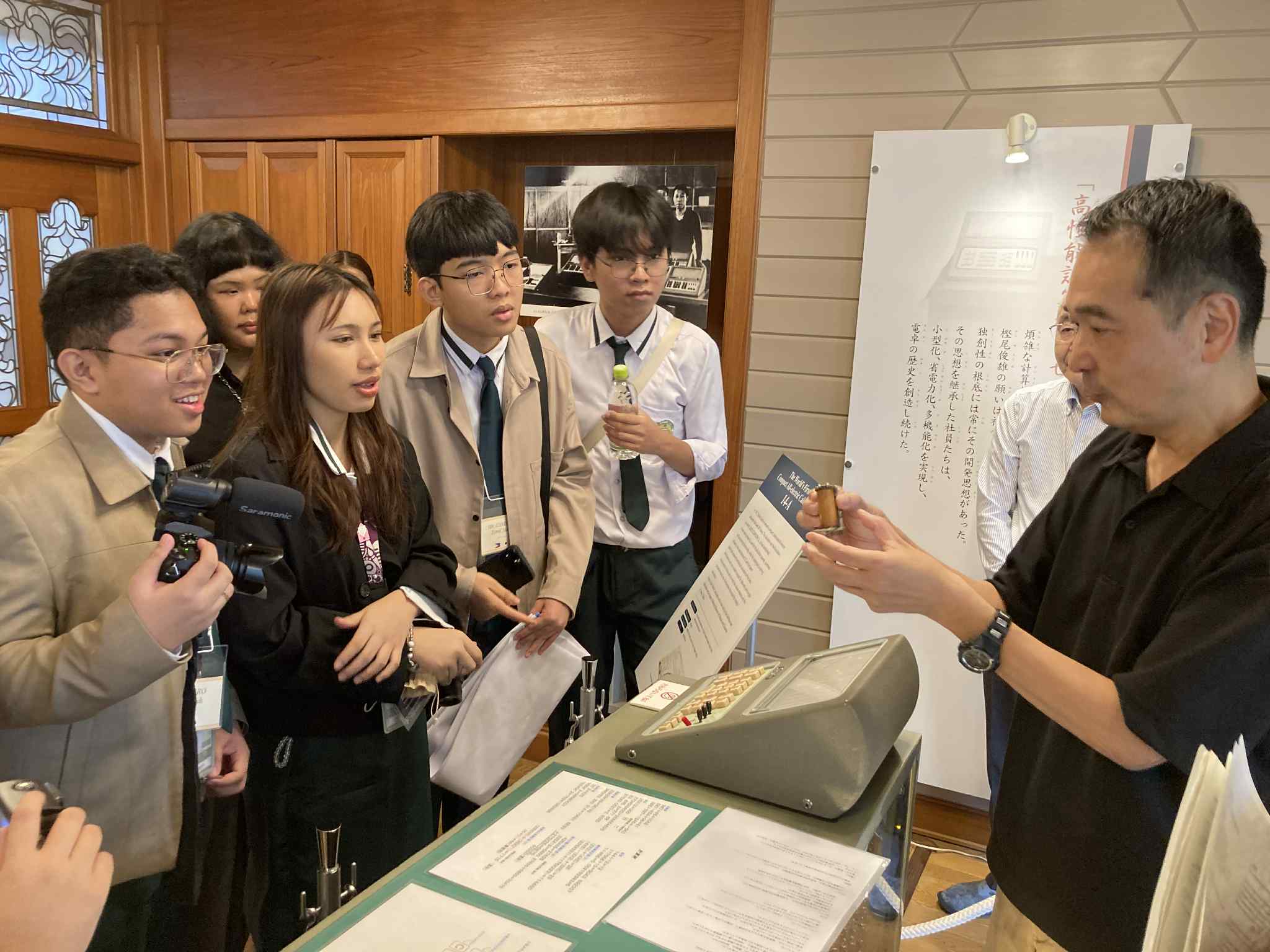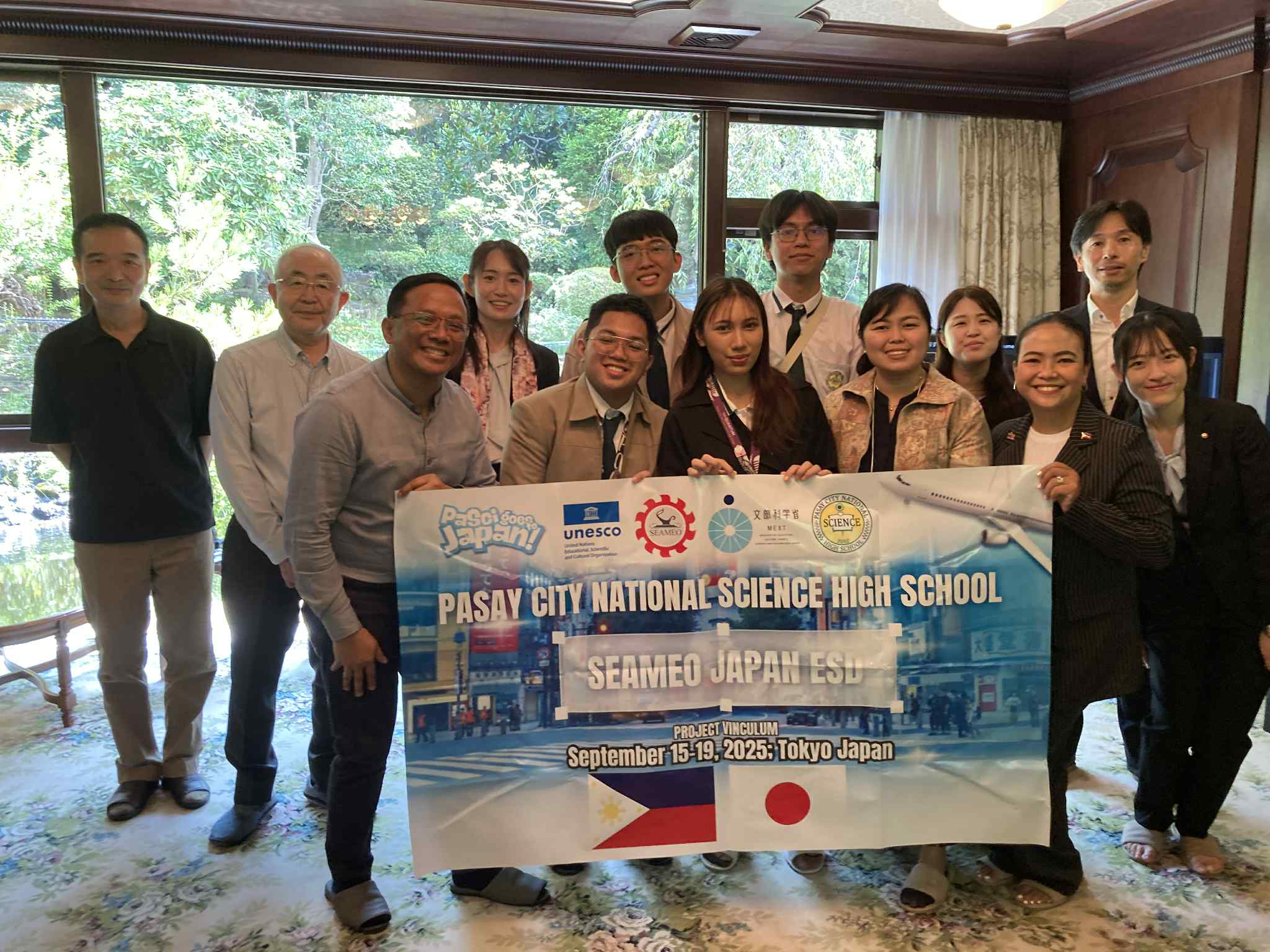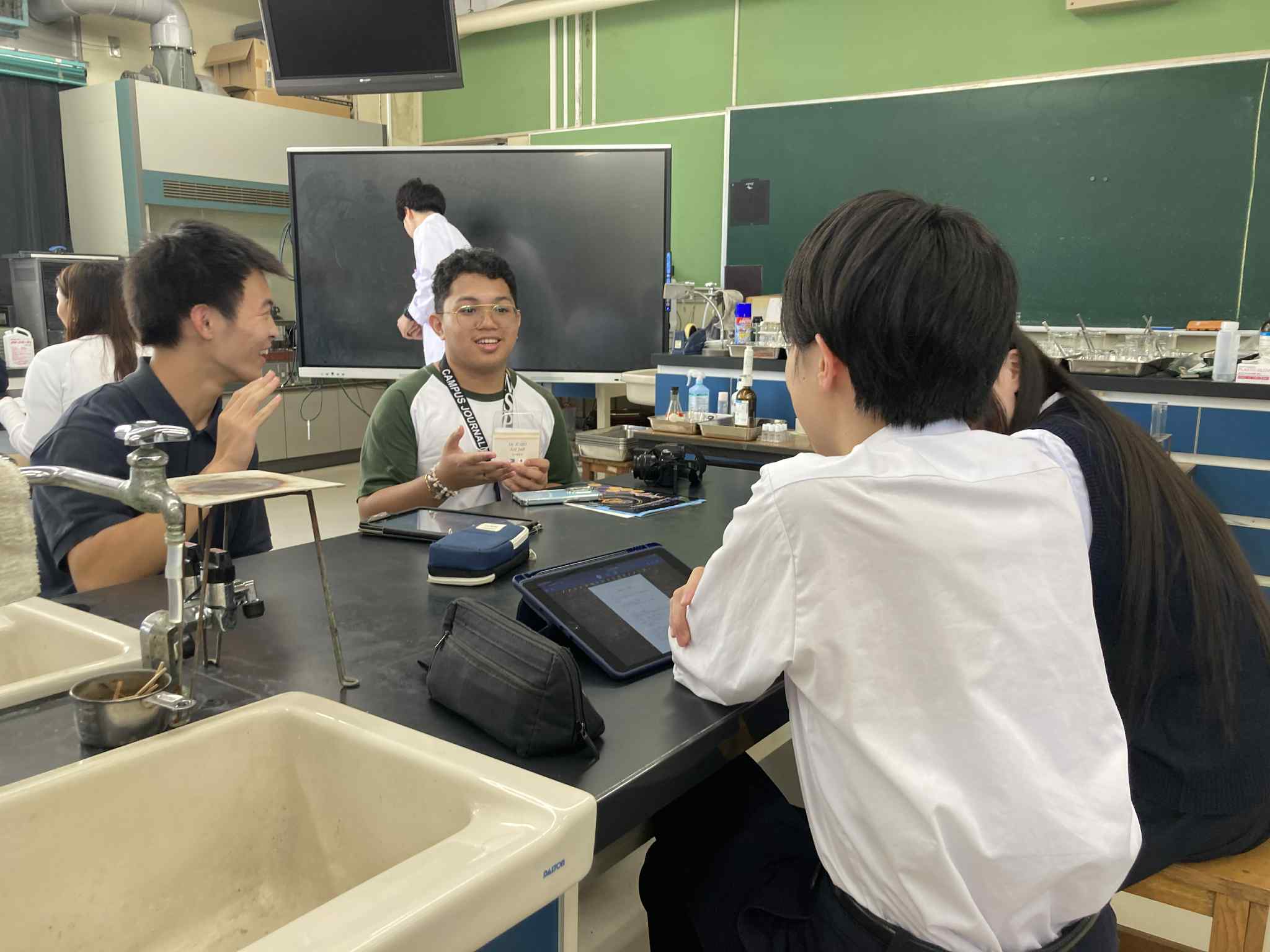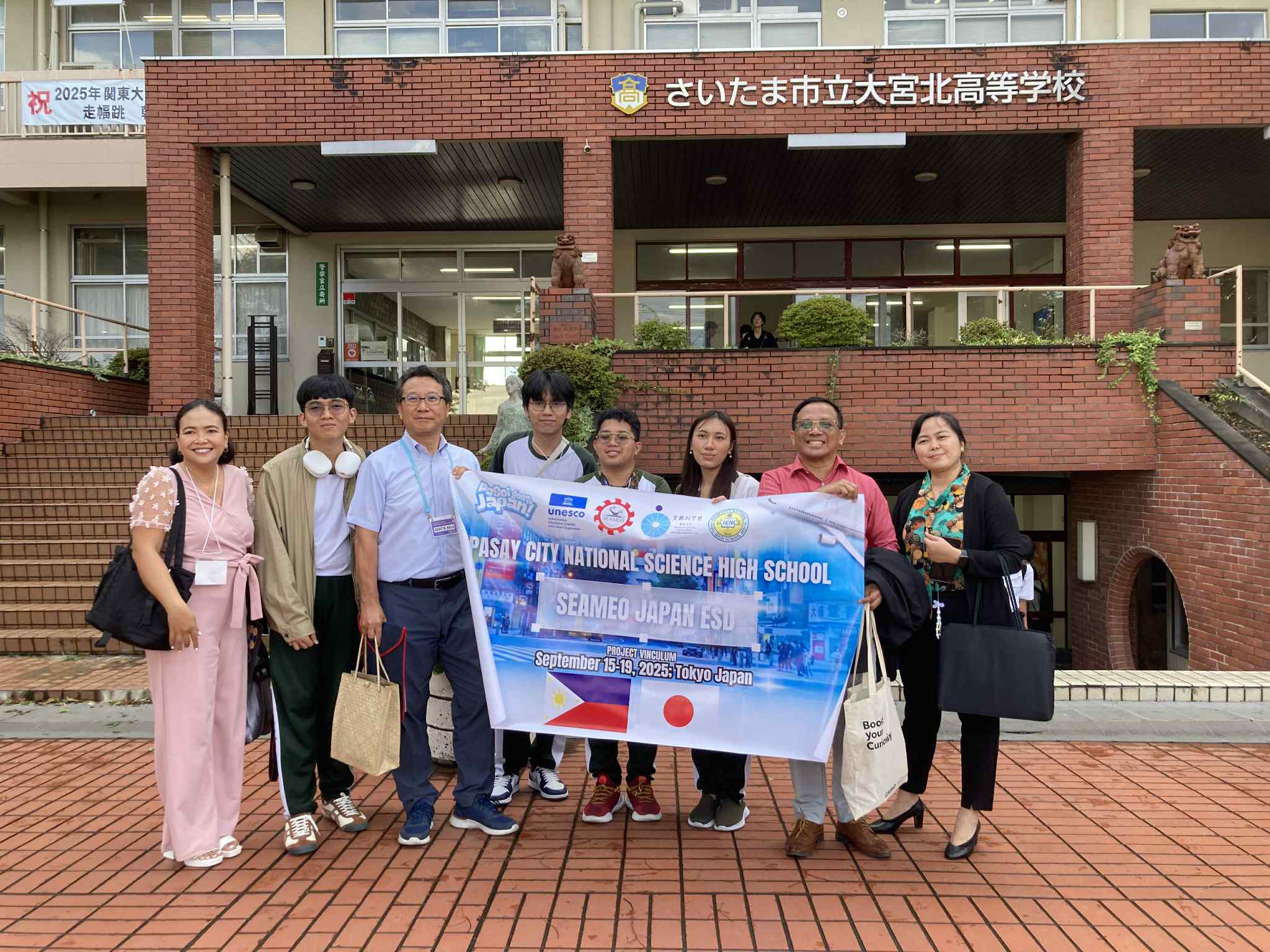The SEAMEO-Japan ESD Award is an award program co-sponsored by the Ministry of Education, Culture, Sports, Science and Technology of Japan (MEXT) and the Southeast Asian Ministers of Education Organization (SEAMEO). The program promotes Education for Sustainable Development (ESD) initiatives in the region by recognizing the good practices of ESD in elementary, junior high and senior high schools in SEAMEO member countries(*1).
The winner of the first prize in 2024 was Pasay City National Science High School in the Philippines. Inspired by the word “VINCULUM”(*2), the students have been working with various partners in the local community to achieve the Sustainable Development Goals (SDGs) by implementing the following five projects to promote STEM education (science, technology, engineering, and mathematics).
1. Project Buklod: A project aimed at contributing to SDG 17: Partnerships for the Goals through collaboration with private companies such as CASIO Education Philippines and local communities
2. Project Abante: A project aimed at contributing to SDG 5: Gender Equality and SDG 10: Reduced Inequalities through lectures by female leaders and activities to promote understanding of LGBTQ+
3. Project Sibol: A project aimed at contributing to SDG 4: Quality Education through the holding of science fairs and mathematics festivals
4. Project Binhi: A project aimed at contributing to SDG 13: Climate Action, SDG 14: Life Below Water, and SDG 15: Life on Land through coastal cleanups and tree-planting activities
5. Project Likha: A project aimed at contributing to SDG 11: Sustainable Cities and Communities through disaster management and mitigation and evacuation drills
These initiatives were highly praised by a panel of judges made up of ESD and education experts from Japan and Southeast Asia, who commended them for “carrying out diverse and interesting activities at low cost, attracting learners (especially children).”
(Click here for details of the projects)
As an extra prize, the winning school has the opportunity to visit Japan. From September 15 to 19, 2025, four students, one principal and two teachers from the school, together with one SEAMEO staff member visited Japan. During their stay, they paid courtesy visits to the Embassy of the Philippines in Japan and the Parliamentary Secretary for Education, Culture, Sports, Science and Technology, as well as visiting the Toshio Kashio Memorial Museum of Invention, the National Museum of Emerging Science and Innovation (Miraikan), and Omiya Kita High School in Saitama.
As mentioned above, since the award-winning initiative involved collaboration with CASIO Education Philippines, on September 16 the group visited the Toshio Kashio Memorial Museum of Invention, dedicated to one of the founders of Casio Computer Co., Ltd. At the museum, Casio representatives explained about the world’s first compact all-electric calculator, as well as various other calculators, electronic musical instruments, wristwatches, and more. As CASIO scientific calculators are used in classes at Pasay City National Science High School, the students showed great interest. At the end of the tour, the students commented, “I was impressed that Casio not only invents things, but also contributes to solving social issues,” and “This visit broadened the scope of my interests and gave me a new perspective.”
On September 18, with the cooperation of the Saitama City Board of Education, the students visited Omiya Kita High School, a UNESCO Associated School and a designated Super Science High School (SSH). In the morning, they were briefed on the school’s initiatives, toured the school, and joined Class 3-1 for a chemistry lesson. The students from Pasay City National Science High School were divided into groups with the Omiya Kita students to conduct experiments on the synthesis of aniline and dyeing using aniline black.
In the afternoon, the students observed STEAMS Time (project-based learning). Omiya Kita High School has established project-based learning as a formal subject in which students identify issues, choose their own research methods, and carry out their own investigations, with the aim of fostering students’ ability to proactively and enthusiastically tackle problem solving. Students from Pasay City National Science High School observed Omiya Kita students conducting research on topics such as protein crystallization, and power generation efficiency and degradation of dye-sensitized solar cells, while listening attentively to their explanations.
At first, the students from Pasay City National Science High School appeared a bit nervous, but the ice was soon broken when they participated in classes with the Japanese students and chatted during lunch break about their schools, lessons, food culture, and anime. One of the teachers remarked that “science is a universal language,” and through the common language of science, it was a day filled with lively discussions.
Reflecting on their visit to Japan, a student from Pasay City National Science High School commented, “Everything I learned during this visit was extremely rewarding, and I look forward to sharing it with my friends back in the Philippines. I hope to visit Japan again someday.” The principal also remarked, “We hope to continue building on the relationships we have established during this visit.”
(*1) The 11 countries of ASEAN including Timor-Leste
(*2) Vinculum is an anatomical term referring to the tissue that connects cells. The term was included in the project name to express the bonds and connections with the local community.
-
 Receiving an explanation of the compact all-electric calculator
Receiving an explanation of the compact all-electric calculator -
 At the Toshio Kashio Memorial Museum of Invention
At the Toshio Kashio Memorial Museum of Invention
-
 Taking part in a chemical experiment
Taking part in a chemical experiment -
 At Omiya Kita High School in Saitama
At Omiya Kita High School in Saitama







